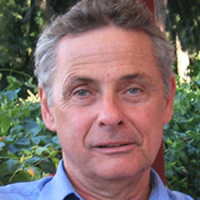Our research is concerned with two aspects of memory storage: (1) the physiological and biochemical processes responsible for rapidly producing stable changes in synapses, and (2) the anatomy and physiology of circuitries responsible for encoding certain types of memory.
We have found that brief episodes of high-frequency electrical stimulation of axons in the hippocampus alter the structure and number of synaptic connections; subsequent work in different laboratories has shown that this effect is correlated with an increase in synaptic strength that lasts indefinitely. Physiological experiments strongly suggest that the stable potentiation is triggered by an influx of calcium occurring during the brief stimulation period, and this led us to search for a calcium-sensitive process that could produce localized anatomical reorganization. A candidate for this role has been identified. Brain cells contain an enzyme that, in the presence of calcium, causes the breakdown of structural proteins responsible for maintaining the shape and biochemical organization of synapses. We have hypothesized that intense synaptic activity stimulates this enzyme by increasing intracellular calcium and that the resultant breakdown and reorganization of synaptic structure produces more potent connections between neurons. One of the more intriguing aspects of this enzyme is that under some circumstances it appears to produce degeneration in nerves and muscles. This raises the possibility that excessive stimulation of the mechanism postulated to produce brain plasticity is also responsible for some instances of brain pathology, particularly those linked to aging. Several studies to explore this idea are underway.
Synaptic plasticity, LTP, glutamate receptors, cognitive disorders, computational models


 Browse Fellows
Browse Fellows